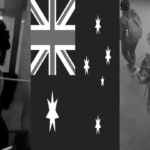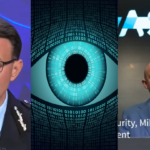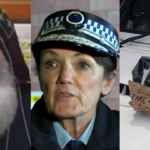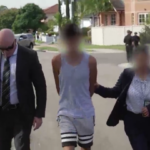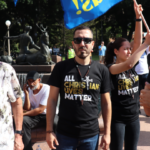‘Probable Terrorism Threat’ Stems from Rise in Far-Right Extremism
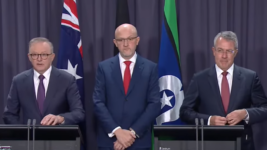
So, prime minister Anthony Albanese turned up the volume on Australia’s National Terrorism Threat Level on Monday morning, from “possible” to “probable”, which he added does not mean “imminent” or that intelligence has any details about a specific “threat or danger”.
And as the PM, ASIO director general Mike Burgess and attorney general Mark Dreyfus all stood before the press, they laid out the new terms and code for how the Australian establishment is going to describe and detail this rising violence or potential for it in the community.
“There are many things driving this global trend towards violence,” Albanese said. But he dare not spell out that Israel’s wanton bloodlust killing fest in Gaza, which his government has complicitly sanctioned, secreted and legitimised, just might be a key driver of this new attitude to bloodletting.
The PM then cites global concerns over “youth radicalisation, online radicalisation and the rise of new mixed ideologies”, which is all newspeak for young far right, majority white, actors, who are now partaking in acts of violence that are harder to term as “lone wolf” due to online global networking.
And prior to introducing chief spy, ASIO’s Mike Burgess, to centre stage in order to introduce us to the new “security environment” Australians find themselves in, Albanese raised the “social cohesion” card, to signal that the messaging being related did too involve the domestic Free Palestine movement.
New terms as white terror rises
ASIO head Burgess then lays it on the public that our “security environment is degrading”, as it’s becoming “more volatile and more unpredictable”, which is all to do with emerging “politically motivated violence”, and this is now one of the spying agencies “principal security concerns”.
Politically motivated violence up until Monday had been a term used to denote a type of terrorism, along with religious or ideologically motivated violence in Australian domestic law. And in fact, in international law, politically motivated violence is the sole definition of terrorism.
But according to the top spy, politically motivated violence – now an agency chief concern, joining “espionage and foreign interference” – “encompasses terrorism, but is broader than that”, as it covers “any violent act or any violent threat intended or likely to achieve a political objective”.
This announcement is coming on the back of close to a year of rising demonstrations against the genocide in Gaza, which the authorities have been at pains to silence and criminalise under the banner of antisemitism. But these demonstrations certainly couldn’t be categorised as terrorism.
However, as Burgess goes on to note, over the “last four months, there have been eight attacks or disruptions that have either involved alleged terrorism or have been investigated as potential acts of terrorism”. And at least half of these have been of the far right and “mixed ideologies” type terror.
So, much of the acts deemed potential terror incidents were perpetrated by white nationalist-actors, and certainly, in the media, the rise in white supremacist inspired terror has been apparent, while meanwhile, in the UK, far-right actors have taken to the streets attacking Muslims and immigrants.
“Mixed ideologies” or confused white nationalists
Burgess went on to tell the ABC’s 7.30 Report on Monday night that the eight specific potentially terror-related incidents incorporate an “equal mix of religiously motivated, nationalist-racist violence” and one of “mixed ideologies that goes to left and right”.
When “religiously motivated” terrorism is used in the Australian public sphere it’s used to denote a violent act committed by a Muslim. “Nationalist-racist violence” means far-right white supremacist terror. And “mixed ideologies” is a new term that appears to signal confused far-right actors.
Journalist Sarah Ferguson then noted that the eight terror events that Burgess was presenting to the public include the Wakeley stabbing by a Muslim teen and the subsequent raids on Muslims as two such acts, which have been identified as religiously motivated, and that leaves six more incidents.
And this would suggest that the majority of the recent attacks have been predominately far-right white supremacist actions, as there is an “equal mix” within the eight, and further, the “mixed ideology” actor told the authorities he was antifa, or left, yet his manifesto was neo-Nazi-related.
Sydney Criminal Lawyers last week noted three of these terror incidents in NSW that appear to be acts of “nationalist-racist violence” and “mixed ideologies”, which have all involved young white males attempting to or succeeding in committing violent acts in public for political purposes.
Burgess responded to a question about his February claim that Sunni violent extremism poses the greatest terror threat in Australia, that this idea was not driving the terror threat being raised to probable. “Not much of that is driving that,” he explained, and added that “it is certainly in the mix”.
The White Rose Society has recently raised that, despite denials in the public sphere, far right active groups, or decentralised networks of small white supremacist groups, have long been operating in Australia, and these globally-linked networks are growing.
Indeed, over the past year, neo-Nazis have started openly demonstrating on the streets, which independent researcher, Andy Fleming, also known as slackbastard, confirmed in May 2023 is a new phenomenon, and these have continued on since, including just last week in Naarm-Melbourne.
So, as the streets of Britain are awash with far-right white supremacist actors rioting, looting and attacking Muslims and immigrants, and the majority of a series of local potential terror incidents have been committed by similar far-right actors, the terror threat has been turned up to probable.
Protest as national security threat
But what’s with Burgess shifting the focus from terrorism to the bring to the fore the new security threat of politically motivated violence?
Well, in part, this shifts the focus on the issue of far-right white terror rising, and it also works to incorporate the actions of the huge local pro-Palestinian movement.
“Politically motivated violence encompasses terrorism but is broader than that,” the top spy told the press, whilst standing on the podium in between the PM and the AG on Monday. “It covers any violent act, or any violent threat intended or likely to achieve a political objective.”
“This includes violent protest, riot or an attack on a politician or our democratic institutions,” Burgess makes clear, as he reveals that the announcement about the terror threat is not only what is under scrutiny, but it is also a warning to antigenocide protesters, as well as far-right actors.
The ASIO director general further comments that “unfortunately, here and overseas, we are seeing spikes in political polarisation and intolerance, uncivil debate and unpeaceful protests”, and these have “accelerated during Israel’s military response” to the 7 October attacks, which is a genocide.
So, while it would appear the terror threat is coming from the far right, the threat of politically motivated violence can now incorporate protests that turn into scuffles with police, which are often provoked by law enforcement, as well as the graffitiing and defacing of politicians’ offices.
And in incorporating these acts of protest and direct actions, usually the domain of law enforcement, into the concern of intelligence agencies is to turn civilian demonstrations against the atrocities our government is supporting into a national security threat, which heightens the potential response.
Protest dressed up as terror
The fact that the government is raising rising protest actions in relation to the Gaza genocide to a national security threat was further elaborated upon when questions were put by the press, after the PM and the ASIO boss launched the probable terror threat, and the AG just repeated what they said.
A politically loaded question was put to Albanese mid-presser, which raised charges of complicity in the genocide laid against his government, and included citing “the Greens” again, as having led the movement, even though it’s actually been a grassroots community led response to Gaza.
The PM further asserted that some senators and MPs had made false claims about Australia being “directly involved in what is occurring in the Middle East” and he said some of it is “designed deliberately to encourage a partisan response in a way that isn’t appropriate”.
“It’s not appropriate for people to encourage some of the actions outside electorate offices and to dismiss them as being just part of the normal political process,” the PM warned pro-Palestinian protesters and supporters in the community.
“It is not normal to have people in occupations for months outside electorate offices, where the work of those electorate offices is to assist people in social security and health and other areas,” he said in relation to the nonviolent sit-in that’s long been stage outside his own electoral office.
And then Burgess piped in later with Gaza not being “the cause” of turning up the terror threat, but rather it being “a significant driver”. And he then added that “we’ve had violent protests before in this country”, when, the Palestine actions have been peaceful, loud and vocal but not violent at all.
“Lawful protests are fine. It’s the people who think violence is the answer,” the ASIO boss continued, even though none of the Gaza protests have involved pro-Palestinian actors committing any acts of violence towards the public or the police whatsoever.
And Burgess’ then asserted that it’s “not just because of Gaza, though in this current environment, violence is more likely at protests,” which really takes the government’s opposition to the Free Palestinian movement and its crackdown on protests in general, to a new national security level.


